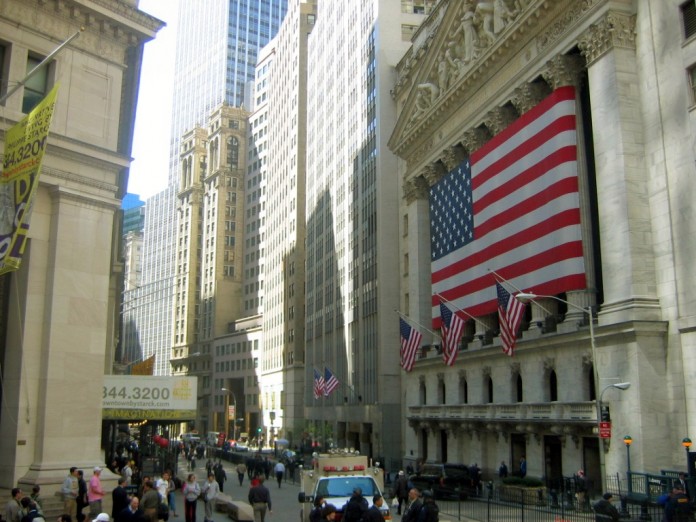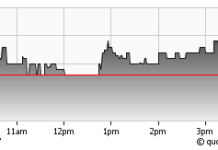I chatted with George Samman (Twitter: @sammantic) about banking with the blockchain. George is the former CMO of Fuzo which is using blockchain to bring financial inclusion to the developing world. He is also Committee Chair of the Wall Street Blockchain Alliance (WSBA) for blockchain and financial services. George also co-founded BTC.sx, now magnr, a bitcoin trading platform. He is also a former Wall Street senior portfolio manager and market strategist as well as a technical analyst. George holds the Chartered Market Technician (CMT) designation. George writes an excellent blog at http://sammantics.com/ 
Can you give us a history of how you came to discover blockchain technology and where you are today?
I came into the space in 2013 when I was the co-founder of btc.sx (now magnr) an online trading platform and bank, I left hat role to explore technologies more dedicated to the blockchain and distributed ledger technologies. I have worked and consulted for a few companies in the space and I am an advisor for a few others as well. I also write my blog at sammantics.com and do some freelance writing. I also open to exploring new opportunities
Overstock CEO Patrick Byrne has said that the R3 consortium is an effort by global banking giants to take “ownership of blockchain technology” or “slow it down.” (http://allcoinsnews.com/2015/12/16/overstock-ceo-confirms-sec-approval-of-digital-securities/) What is your perspective of Byrne’s view?
I disagree with that view. Banks have big regulatory constraints that doesn’t allow them to be a part of a censorship resistant system. They need to trust and know all counterparties they deal with. Banks also have real problems. They are constantly settling lawsuits, negative to very low interest rates hurt their ability to make money from demand deposits and have been forced to shed core businesses by a bevy of regulations which have been enforced post 2009 subprime mortgage crisis. This technology will help them in many of those areas particularly the cost cutting side first.
How does distributed ledger or blockchain technology pose a challenge to traditional banking systems?
I don’t think it challenges them at all. Banks are housed by a regulatory moat and anyone that wants to be a bank will have to regulate in some way. Even bitcoin is being regulated. If anything I think this technology makes banks more powerful if they choose to implement it correctly. They will become leaner and meaner and a lot of revenue can be built off the underlying blockchain archictecture once its deployed. What I mean by this is the application layer.
You have written in your blog (http://sammantics.com/), which provides excellent content on the subject, I must add, that “the value of this technology is extremely valuable to [banks] for achieving their goals”. How will banks benefit from introducing distributed ledger technology?
So their goals center around cutting costs dramatically. First things are obvious getting rid of a lot of paperwork and streamlining back office functionalities. These can be done on a ledger and will quite bluntly get rid of a lot of bank head count. The paperless part is obvious in 2 ways: databases and smart contracts This can be considered cost avoidance. It also gets rid of middlemen for banks. Another thing will be to reduce redundancies in banks (of which there are many), This can be done through a blockchain by getting rid of the operational and functional silos which exist today.
Having read your post on the matter, can you explain to me how the blockchain can offset compliance costs? Will it achieve this in the same way for Basel III, Dodd-Frank, Card Act, Regulation E, FDIC Insurance, and the Durbin Amendment?
Well if you think about how the technology works, there will be multiple actors on the ledgers all with real time read/write functionality. So you will get total transparency. The regulators will be one of the nodes and get a real view of the risk profile of the banks, so this can dramatically reduce compliance costs. Have this real time view allows for real time adjustments and could help prevent bad situations from arising, some of the compliance will become preventative. Once regulators are comfortable with what banks are doing they will be able to accept certain customers who have been rejected due to the region they live in because they are deemed too high risk. We will also see that capital ratios can be adjusted accordingly as regulators and banks are able to monitor them in real time. This could lead to some of the most efficient uses of capital in history.
How will it benefit banks in terms of revenue and profits? Where will the revenues come from in banking smart contracts?
The gate keeper model will be one way. If you have two parties who want to execute a smart contract for payment, those two parties draw up a contract to be executed in which money moves out of one party’s bank account into the other party’s bank account. The contract stipulates ” Take money from Party A’s account at Bank X to pay Party B’s account at Bank X (or Bank Y). Easy right? Well not so fast. Those smart contracts need to connect to something to settle this transaction. That is a connection to a distributed ledger which connects to the real world banking system and allows the parties to enter this permissioned network and execute the transaction. In other words, integration is needed with the banks API and this is where a transaction fee can be charged by banks for fulfilling the stipulations of the smart contract. This will also apply to asset backed securities in the future as well as internet of things (IOT). Customers will stay with banks if they receive great customer service and convenience, leaving a bank for a customer is not easy and if the ecosystem around paying bills and financial services becomes easier, which I think it will there is revenue to be had. I also see partnerships with companies in the space as a way too as well.
Can you make a prediction on when the first bank will roll out Real Time Gross Settlement using Distributed Ledger Technology?
I would say you won’t see that for a long time. There are way to many risks around which I have mentioned in a blog post I wrote from a risk and compliance standpoint which need to be figured out in order to make it a reality. If I had to put a hard number around it, it will be around the time fractional reserve banking and leverage ends. In other words, probably not for a really long time.
Besides settlement what other parts of banking can utilize blockchain technology? Nxt recently talked about using blockchain technology to totally replace legacy banking systems? (http://allcoinsnews.com/2015/11/21/nxt-foundation-positions-platform-to-entirely-replace-legacy-banking-systems/)
Personally clearing settlement to me is a really hard first step to take. Those are really difficult to implement from a technology standpoint. The cost savings will need to justify the price tag, since the current way of settling securities in most countries is really efficient.
Things that I look at are provenance, managing supply chains (data supply chains, asset backed securities, chain of title and custody), and opening up transparency. People want transparency more than ever and banks will need to deliver. Think about a supply chain ecosystem and all the parties that will be on the ledger, banks will be one of them as they are an integral part of the supply chain.
Another is identity. Banks truly need a way to identify customers. This will help the unbanked get banking accounts and will help banks lower their compliance costs particularly around AML/KYC. Regulation is something the banks need to get a handle on and in that area there is something called the Common Reporting Standards (CRS) working towards this helps banks tremendously in lowering their regulatory burden. If this was implemented on a shared regulatory ledger it would be powerful.













